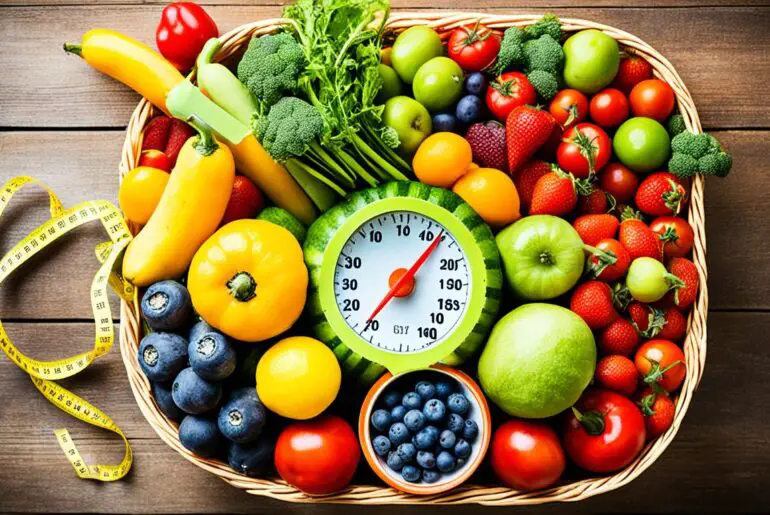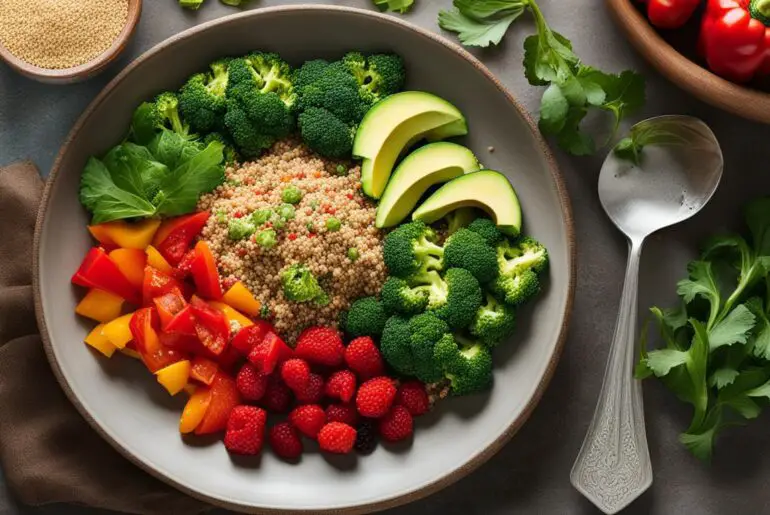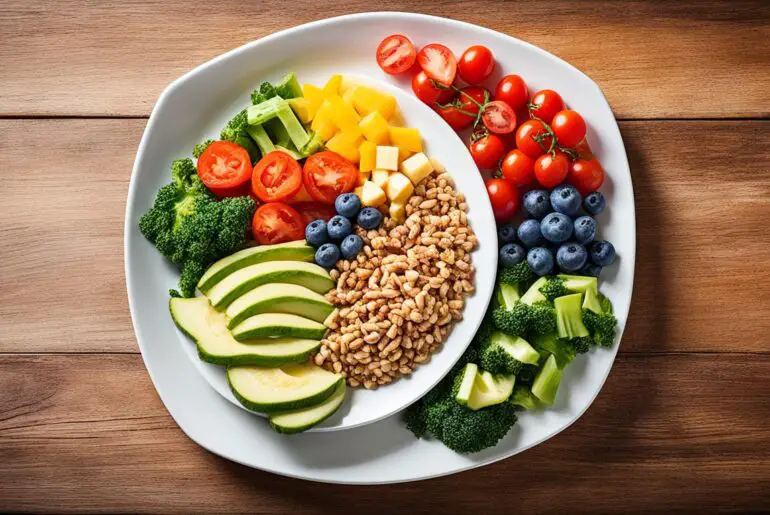Are you struggling to maintain your weight after completing the HCG diet? You’re not alone. While the HCG diet can be effective for weight loss, many people find it challenging to sustain their results in the long term. That’s why it’s crucial to have a solid post-HCG diet meal planning strategy in place.
Meal planning is the key to maintaining weight loss and ensuring that you stay on track with your health and fitness goals. By prepping your meals in advance and making thoughtful food choices, you can set yourself up for success and avoid the common pitfalls that can lead to weight regain.
In this article, I will share some valuable post-HCG diet meal planning strategies that will help you maintain your weight loss and embrace a healthier lifestyle. From gradually increasing calorie intake to reintroducing normal foods in moderation, you’ll discover effective tactics that will support your ongoing weight management efforts.
If you’re ready to take your post-HCG diet journey to the next level and make lasting changes, keep reading to find out the best meal planning strategies for maintaining your weight loss!
Key Takeaways:
- Meal planning is crucial for maintaining weight loss after the HCG diet.
- Gradually increasing calorie intake helps the body adjust without experiencing weight gain.
- Reintroducing normal foods in moderation is an important step after completing the HCG diet.
- Implementing an exercise routine is essential for sustaining weight loss.
- Following a well-balanced and healthy meal plan can help you maintain your weight loss success.
Understanding the HCG Diet
The HCG diet is a unique weight loss program that combines calorie restriction with regular injections of HCG hormone. This diet protocol involves a strict limitation on daily calorie intake, typically ranging from 500 to 800 calories per day. By restricting calories, the body is forced to utilize stored fat for energy, resulting in rapid weight loss.
However, it is important to note that the success of the HCG diet relies not only on calorie restriction but also on the use of HCG injections. These injections help stimulate the release of stored fat, allowing for more efficient weight loss. HCG, or human chorionic gonadotropin, is a hormone that is naturally produced during pregnancy and is believed to play a role in mobilizing fat stores.
Research has shown that HCG injections, when combined with a low-calorie diet, can lead to more significant weight loss compared to just calorie restriction alone.
While the HCG diet can result in impressive weight loss, it is crucial to understand that once the injections are stopped, effective strategies must be implemented to maintain the weight loss. Without proper maintenance, there is a risk of weight regain.
Why Calorie Restriction Alone Isn’t Enough
Calorie restriction alone, without the use of HCG injections, may lead to weight loss, but it can also result in muscle loss, reduced metabolism, and increased hunger. The HCG hormone helps prevent these negative effects by targeting stored fat specifically, preserving lean muscle mass and preventing metabolic slowdown.
The combination of HCG injections and calorie restriction in the HCG diet offers a more targeted and sustainable approach to weight loss.
| Pros of the HCG Diet | Cons of the HCG Diet |
|---|---|
|
|
Overall, the HCG diet can be an effective and efficient way to achieve significant weight loss quickly. However, it is crucial to consult with a healthcare professional before starting this diet, as it requires medical supervision and monitoring to ensure safety and effectiveness.
Gradually Increase Calorie Intake
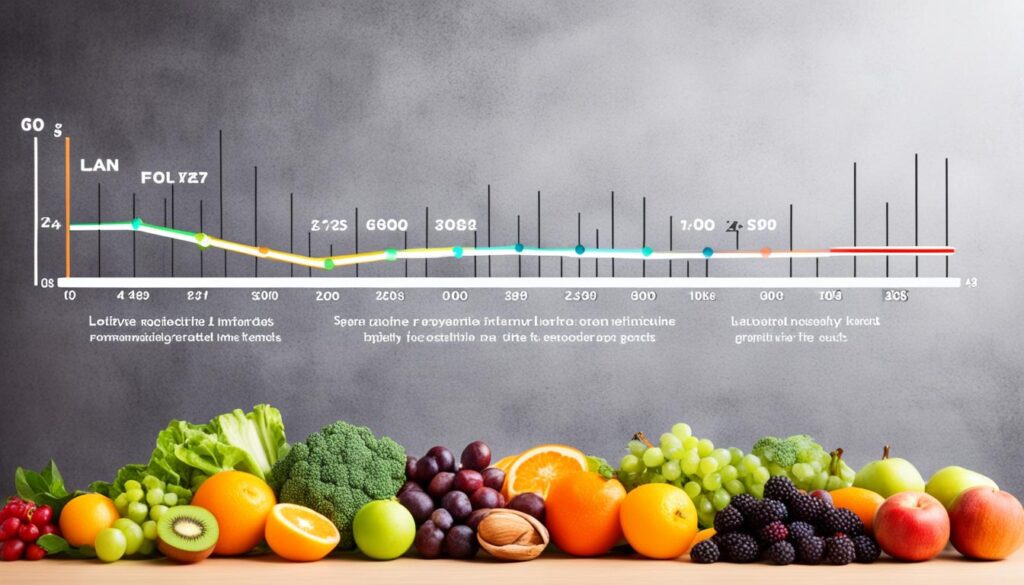
After completing the HCG diet, it is crucial to gradually increase your calorie intake to maintain your weight loss and avoid sudden weight gain. Rapidly increasing calorie intake can shock the body and lead to undesired outcomes. To ensure a smooth transition, it is recommended to gradually increase your calorie intake by 200 kcal per week.
Here’s a step-by-step guide to help you:
- Calculate your recommended daily caloric intake: Multiply your weight by 13 to determine the number of calories you should consume each day for weight maintenance.
- Start small: Begin by adding 200 kcal to your daily calorie intake in the first week.
- Monitor your progress: Keep a close eye on your weight during the first week to ensure that you are adapting well to the increased calorie intake.
- Continue increasing gradually: If your weight remains stable after the first week, add another 200 kcal in the second week. Repeat this process until you reach your recommended daily caloric intake.
This gradual approach allows your body to adjust to a higher calorie intake without triggering weight gain. It gives your metabolism time to adapt to the additional energy and sets a solid foundation for maintaining your weight loss achievements.
Example of Gradually Increasing Calorie Intake
| Week | Additional Calories (kcal) | Total Caloric Intake (kcal) |
|---|---|---|
| Week 1 | 200 | Recommended daily caloric intake + 200 |
| Week 2 | 200 | Recommended daily caloric intake + 400 |
| Week 3 | 200 | Recommended daily caloric intake + 600 |
| Week 4 | 200 | Recommended daily caloric intake + 800 |
Reintroducing Normal Foods
After completing the HCG diet, it’s time to reintroduce normal foods back into your diet. However, it’s important to do so in a gradual and controlled manner to prevent any weight gain. Start by incorporating low-carb and low-fat options into your meals. These foods are great for maintaining a healthy weight and can help you sustain the progress you made during the HCG diet.
When reintroducing normal foods, it’s essential to practice moderation. Be mindful of your portion sizes and listen to your body’s hunger and fullness cues. This will help you avoid overeating and maintain a balanced diet. By reintroducing foods in moderation, you can enjoy a wider range of options and continue to make progress in optimizing your health and weight loss goals.
It’s important to monitor your weight carefully during this phase. If you notice any unwanted weight gain, consider adjusting the levels of certain foods in your diet. Everyone’s body is unique, so it’s essential to pay attention to how your body responds to different foods.
“The key to success is moderation. By gradually reintroducing normal foods into your diet and monitoring your weight, you can maintain the progress you achieved during the HCG diet.”
Remember, the goal is to find a balance that works for you. Reintroduce foods that you enjoy but keep an eye on their impact on your weight. This will help you achieve long-term weight maintenance and a sustainable healthy lifestyle.
Next, let’s explore the importance of implementing an exercise routine after the HCG diet.
Implementing an Exercise Routine

After completing the HCG diet and gradually increasing your calorie intake, it’s important to incorporate an exercise routine into your post-diet plan. Regular physical activity is crucial for maintaining weight loss and overall health.
Aim to engage in at least 75 minutes of vigorous exercise or 150 minutes of moderate exercise per week. This can be achieved through a combination of cardio exercises and resistance exercises.
Cardio Exercises
Cardio exercises are a great way to burn calories, improve cardiovascular health, and boost your metabolism. Some effective cardio exercises to consider include:
- Brisk walking
- Cycling
- Swimming
- Jogging or running
- Dancing
Choose activities that you enjoy and that fit your fitness level. Aim for at least 30 minutes of moderate-to-intense cardio exercise on most days of the week to maintain weight loss.
Resistance Exercises
Resistance exercises help build and maintain muscle mass, which can increase your metabolism and promote long-term weight loss. Incorporate resistance exercises into your routine at least two to three times per week. Some examples of resistance exercises include:
- Weightlifting
- Bodyweight exercises (push-ups, squats, etc.)
- Resistance band workouts
- Pilates or yoga
Focus on targeting different muscle groups and gradually increasing the intensity or weight as you get stronger.
Stay Active Throughout the Day
In addition to dedicated exercise sessions, try to incorporate more movement into your daily routine. Take the stairs instead of the elevator, go for short walks during breaks, or do some stretching while watching TV. Every little bit of activity adds up and helps maintain weight loss.
“Exercise is key to maintaining weight loss. It not only helps you burn calories but also improves your overall health and well-being.” – Dr. Sarah Thompson, Fitness Expert
Recommended Foods on the HCG Diet
The HCG diet provides a specific list of foods to consume during the low-calorie phase. These foods are carefully selected to maximize weight loss and promote optimal health. By following the recommended food list, you can stay on track with your HCG diet and achieve your weight loss goals.
Approved Proteins
During the low-calorie phase of the HCG diet, you are allowed to consume lean proteins. These protein sources are essential for maintaining muscle mass and feeling satisfied throughout the day. The approved proteins include:
| Protein Source | Description |
|---|---|
| White Fish | A healthy source of omega-3 fatty acids and low in calories. |
| Lobster | A high-protein seafood option with low-calorie content. |
| Shrimp | A low-calorie protein source that is rich in nutrients. |
| Extra Lean Beef | Packed with protein and low in fat, making it a satisfying choice. |
| Chicken | A lean protein option that can be prepared in various ways. |
Recommended Vegetables
Vegetables are an essential part of the HCG diet as they provide essential nutrients, fiber, and volume to your meals. The recommended vegetables include:
- Spinach
- Cauliflower
- Tomatoes
- Broccoli
Allowed Fruits
Fruits can add a touch of sweetness and variety to your diet while still being low in calories. The allowed fruits on the HCG diet include:
- Grapefruit
- Oranges
- Strawberries
Approved Drinks
Staying hydrated is essential during the HCG diet. The approved drinks include:
- Herbal tea
- Coffee
To get a clear picture of the recommended foods on the HCG diet, refer to the table below:
| Approved Proteins | Recommended Vegetables | Allowed Fruits | Approved Drinks |
|---|---|---|---|
| White Fish | Spinach | Grapefruit | Herbal tea |
| Lobster | Cauliflower | Oranges | Coffee |
| Shrimp | Tomatoes | Strawberries | |
| Extra Lean Beef | Broccoli | ||
| Chicken |
By following the recommended foods on the HCG diet, you can ensure a balanced and nutritious eating plan while achieving your weight loss goals.
Portion Size Control

Portion size control plays a critical role in the success of the HCG diet. With a daily caloric intake of less than 500 calories, it is essential to follow portion size guidelines to maintain calorie restriction and achieve your weight loss goals. By carefully monitoring and controlling the amount of food you consume, you can optimize your results on the HCG diet.
The HCG diet emphasizes the importance of portion size control to ensure that you stay within the recommended calorie range. By adhering to specific guidelines, you can ensure that your body is receiving the necessary nutrients while still creating a calorie deficit for weight loss.
To practice portion size control effectively on the HCG diet, consider the following strategies:
- Use a food scale: Weighing your food can provide an accurate measurement of portion sizes, allowing you to stay within the prescribed calorie range.
- Visual cues: Familiarize yourself with visual cues to estimate portion sizes. For example, a serving of protein should be about the size of a deck of cards.
- Avoid distractions: Pay attention to your food and avoid distractions while eating. By focusing on your meal, you are more likely to recognize when you are satisfied and avoid overeating.
- Eat slowly: Take your time to savor each bite and allow your body to register feelings of fullness. Eating slowly can help prevent overeating and promote better digestion.
By incorporating these portion size control strategies into your HCG diet plan, you can maintain the calorie restriction necessary for weight loss while ensuring adequate nutrition. Remember, portion control is a crucial aspect of the HCG diet and can significantly impact your results.
| Food Group | Recommended Portion Size |
|---|---|
| Proteins (e.g., lean meats, fish, poultry) | 3-4 ounces |
| Vegetables (e.g., leafy greens, broccoli, tomatoes) | 1 cup (raw) or 1/2 cup (cooked) |
| Fruits (e.g., grapefruit, oranges, strawberries) | 1 medium-sized fruit or 1/2 cup (sliced) |
| Grains (e.g., whole wheat bread, brown rice) | Avoid during the low-calorie phase of the HCG diet |
| Healthy Fats (e.g., avocado, olive oil) | Use sparingly during the low-calorie phase of the HCG diet |
The Different Phases of the HCG Diet

The HCG diet is divided into distinct phases, each serving a specific purpose in achieving weight loss and maintenance: the low-calorie phase and the maintenance phase.
The Low-Calorie Phase
The low-calorie phase is the initial stage of the HCG diet where calorie intake is significantly restricted. Typically, individuals consume only 500 to 800 calories per day. This phase usually lasts for a specific duration, generally ranging from three to six weeks.
During the low-calorie phase, specific foods are consumed, focusing on lean proteins, vegetables, and fruits. The purpose of this phase is to stimulate fat loss while ensuring the body receives essential nutrients.
To illustrate the food options during the low-calorie phase, refer to the following table:
| Approved Proteins | Recommended Vegetables | Allowed Fruits | Approved Drinks |
|---|---|---|---|
| White fish, lobster, shrimp, extra lean beef, chicken | Spinach, cauliflower, tomatoes, broccoli | Grapefruit, oranges, strawberries | Herbal tea, coffee |
The Maintenance Phase
Once the low-calorie phase is completed, individuals transition into the maintenance phase. This phase involves gradually increasing calorie intake and reintroducing normal foods. The purpose of the maintenance phase is to stabilize weight loss, establish new eating habits, and prevent rebound weight gain.
During the maintenance phase, it is essential to monitor portion sizes and make careful food choices. This phase allows for more food options compared to the low-calorie phase but still excludes sugars and starchy foods.
It is crucial to understand and follow the guidelines for each phase to achieve successful weight loss and maintenance on the HCG diet.
Sample Menu for Maintenance Phase
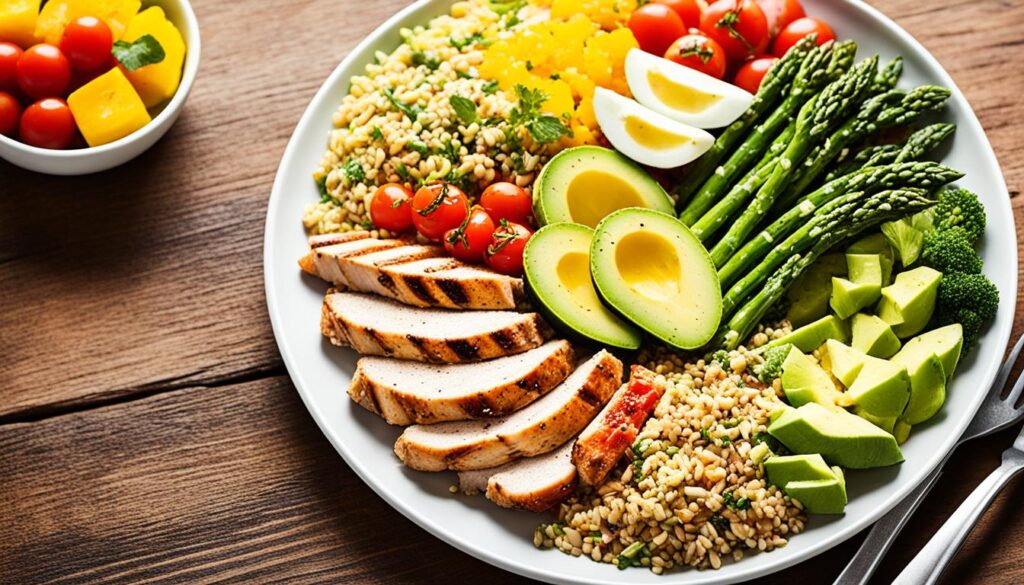
During the maintenance phase of the HCG diet, it is important to follow a well-balanced and healthy menu to maintain weight loss. This phase allows for more food options while still excluding sugars and starches. By focusing on whole, natural foods and avoiding processed options, you can continue to support your weight maintenance goals.
Here is a sample menu that includes a variety of meals suitable for the maintenance phase of the HCG diet:
Breakfast:
- Eggs with vegetables (such as spinach, tomatoes, and bell peppers)
- Whole grain toast or avocado
- Fruit salad (e.g., berries or grapefruit)
Lunch:
- Grilled chicken or fish
- Mixed green salad with a variety of veggies (such as cucumber, carrot, and radish)
- Dressing made with olive oil and vinegar
Snack:
- Handful of nuts (such as almonds or walnuts)
- Greek yogurt with berries
Dinner:
- Lean beef or turkey
- Steamed vegetables (such as broccoli, cauliflower, and asparagus)
- Quinoa or brown rice
Evening Snack:
- Fruit skewers with pineapple, melon, and grapes
- Low-fat cottage cheese or Greek yogurt
Remember to listen to your body’s hunger and fullness cues during the maintenance phase. Proper portion control is key to maintaining weight loss. Additionally, staying hydrated by drinking plenty of water throughout the day is essential.
“Following a well-balanced and healthy menu can support weight maintenance after the HCG diet.” – HCG Diet Expert
Sample Maintenance Phase Meal Plan
| Meal | Food Choices |
|---|---|
| Breakfast | Eggs with vegetables, whole grain toast or avocado, fruit salad |
| Lunch | Grilled chicken or fish, mixed green salad with various veggies, olive oil and vinegar dressing |
| Snack | Handful of nuts, Greek yogurt with berries |
| Dinner | Lean beef or turkey, steamed vegetables, quinoa or brown rice |
| Evening Snack | Fruit skewers, low-fat cottage cheese or Greek yogurt |
By adhering to a balanced and nutritious menu, you can successfully navigate the maintenance phase of the HCG diet and achieve your weight maintenance goals.
Conclusion
I can conclude that implementing effective strategies for weight maintenance is crucial after completing the HCG diet. Gradually increasing calorie intake, reintroducing normal foods in moderation, and following an exercise routine are key post-HCG diet strategies for maintaining weight loss.
By gradually increasing calorie intake, the body can adjust to the higher intake without experiencing weight gain. This approach allows for a sustainable transition from the strict calorie restriction of the HCG diet. Reintroducing normal foods slowly and in moderation is important to prevent weight regain. Starting with low-carb and low-fat options and monitoring weight carefully can optimize long-term weight maintenance.
Incorporating an exercise routine after the HCG diet is essential for maintaining weight loss. Engaging in both cardio exercises, such as brisk walking or biking, and resistance exercises can help preserve muscle mass, boost metabolism, and support overall weight management. By following these post-HCG diet strategies, you can embrace a healthier lifestyle and sustain your weight loss success.
FAQ
What are some post-HCG diet meal planning strategies?
Some post-HCG diet meal planning strategies include gradually increasing calorie intake, reintroducing normal foods in moderation, and implementing an exercise routine.
What is the HCG diet and how does it work?
The HCG diet is a weight loss plan that combines calorie restriction with regular doses of HCG injections. These injections stimulate the release of stored fat and aid in weight loss.
How should calorie intake be gradually increased after the HCG diet?
After completing the HCG diet, it is important to gradually increase calorie intake by 200 kcal per week until reaching the recommended daily caloric intake for weight maintenance.
How should normal foods be reintroduced after the HCG diet?
Normal foods should be reintroduced slowly and in moderation after the HCG diet. Start with low-carb and low-fat options, gradually adding them back into your diet while monitoring your weight carefully.
What kind of exercise routine should be implemented after the HCG diet?
After the HCG diet, it is important to implement an exercise routine that includes at least 75 minutes of vigorous exercise or 150 minutes of moderate exercise per week. Cardio exercises, such as brisk walking or biking, and resistance exercises are recommended.
What foods are allowed on the HCG diet?
Approved proteins on the HCG diet include white fish, lobster, shrimp, extra lean beef, and chicken. Recommended vegetables include spinach, cauliflower, tomatoes, and broccoli. Allowed fruits include grapefruit, oranges, and strawberries. Approved drinks include herbal tea and coffee.
How important is portion size control on the HCG diet?
Portion size control is crucial on the HCG diet to ensure that you stay within the recommended calorie range and achieve your weight loss goals.
What are the different phases of the HCG diet?
The HCG diet consists of different phases, including the low-calorie phase and the maintenance phase. During the low-calorie phase, calorie intake is restricted, and specific foods are consumed. The maintenance phase involves gradually increasing calorie intake and reintroducing normal foods.
A sample menu for the maintenance phase of the HCG diet may include meals such as eggs with vegetables, grilled meats with salad, and fruit snacks. It is important to follow a well-balanced and healthy menu to maintain weight loss after the HCG diet.
How can weight loss be maintained after the HCG diet?
Effective strategies for maintaining weight loss after the HCG diet include gradual calorie increase, reintroducing normal foods in moderation, and implementing an exercise routine.


